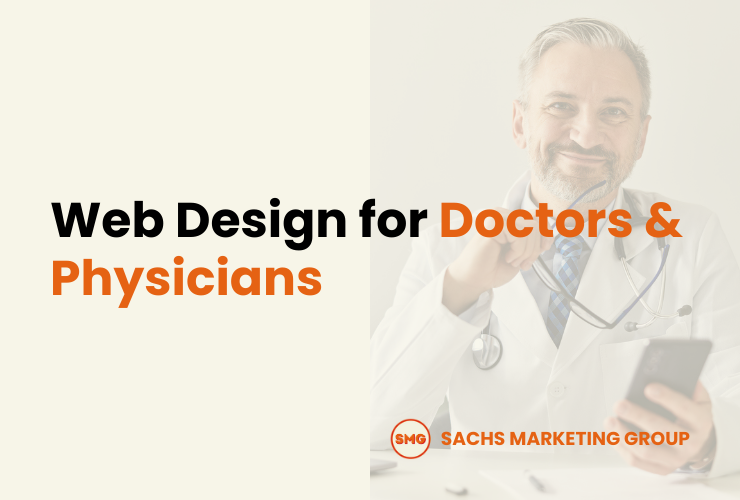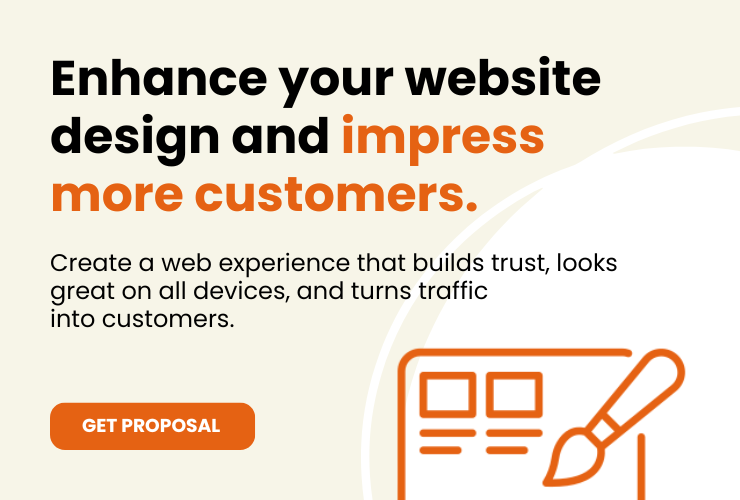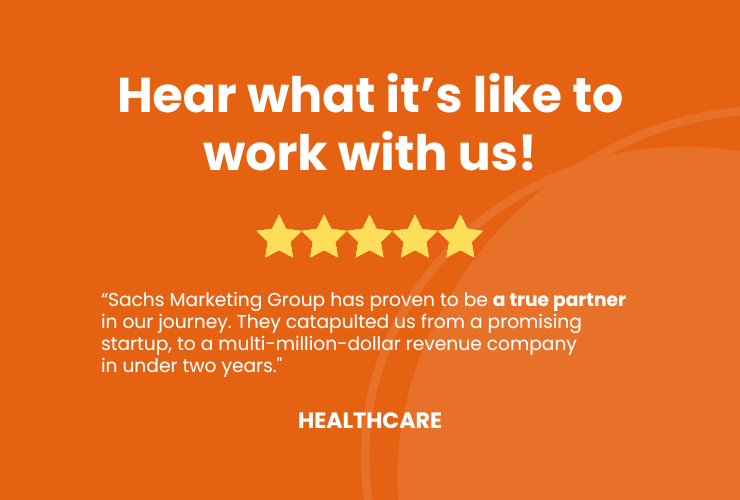Web design for doctors and physicians is crucial as it first impacts patient trust and professional credibility. An intuitive, professional website ensures a positive user experience, providing easy access to essential information like services, location, and booking. This accessibility and a strong online presence can significantly increase a practice's visibility, helping to attract and retain more patients.
For doctors and physicians, a professionally designed website is not just a digital business card but a fundamental tool that can enhance patient trust, improve healthcare delivery, and streamline patient management.
With the increasing demand for online health information and services, the importance of having an accessible, informative, and responsive website cannot be overstressed. Your website's design plays an important role in digital marketing for doctors and physicians, as it often responsible for making a great first impression among potential patients.
This article explores everything you need to know about web design for doctors and physicians.
Overview
Web Design for Doctors & Physicians: Key Essentials
Professional web design is crucial for doctors and physicians as it directly influences how patients perceive their practice and services.
An optimized, well-designed website boosts credibility and ensures that essential health information and services are accessible to those in need. Medical professionals can greatly enhance patient interaction and satisfaction by providing a user-friendly, engaging, and informative online presence.
Here are some of the essential features of a professional web design for doctors and physicians that can help your practice grow:
Professional Aesthetic
A professional aesthetic on a medical website conveys a sense of trust and competence, which are crucial for attracting and retaining patients.
This aesthetic should blend clean, attractive layouts with functional design elements to create a welcoming atmosphere. Colors, fonts, and imagery should be chosen to reflect the practice's professionalism while still being inviting. A clutter-free, well-organized website looks good and suggests that the medical practice is efficient and cares about its patients' experiences.
Such an environment helps reduce patient anxiety about seeking care and encourages them to explore the site further, increasing patient engagement and satisfaction.
Responsive Design
Responsive design ensures that a website functions well on any device, whether a desktop, tablet, or smartphone. This adaptability is crucial as more patients use mobile devices to research health information, find doctors, and book appointments.
A responsive website automatically adjusts its layout, images, and functionalities to match the screen size and orientation of the device used. This seamless operation prevents frustrations such as complex navigation, zooming in and out to read content, or inaccessible features, making the website more user-friendly. Search engines, like Google, pay close attention to this web design feature, so ensuring your website is responsive to all devices can positively impact SEO for doctors.
Ultimately, responsive design improves the user experience, leading to higher patient satisfaction and increased likelihood of returning to the site or recommending it to others.
Simple Navigation
Simple navigation is key to ensuring patients find the information they need quickly and effortlessly.
A medical website should have a clear, logical menu structure that directs visitors to information about services, staff bios, contact details, and patient resources without confusion. Avoiding overly complex or deep menu hierarchies helps patients easily navigate the site, reducing frustration and improving the overall user experience.
Efficient navigation supports better patient engagement. When visitors can easily find what they are looking for, they are more likely to explore in-depth and utilize the services offered, such as booking appointments or accessing health resources.
Online Appointment Scheduling
Online appointment scheduling is a feature that enhances convenience for both patients and medical staff. Allowing patients to book their appointments at their convenience reduces waiting times and phone calls, freeing staff to focus on in-person patient care.
This system should be easy to use, display available times clearly, and confirm bookings promptly. Integrating online scheduling into a medical website can significantly increase patient satisfaction by empowering patients to manage their health care on their own terms.
It also demonstrates a practice’s commitment to using modern technology to improve healthcare access and efficiency.
If you're investing in PPC advertising for doctors, advertising a page with online appointment scheduling options can help improve your Google Ads quality score, which increases your ad rank and reduces your cost per click (CPC).
Detailed Treatment Descriptions
Detailed treatment descriptions are vital for helping patients understand the services offered by a medical practice. Each treatment or service should have a page on the website providing detailed, understandable explanations.
These descriptions should cover the treatment's involvement, the conditions it addresses, what patients might expect during the procedure, and any post-treatment care considerations.
Providing this information helps patients feel more prepared and less anxious about undergoing medical procedures.
It also assists them in making informed decisions about their health care, which can lead to better health outcomes and greater patient trust in the medical provider.
Professional Staff Bios
Introducing the medical team through professional staff bios on your website can significantly enhance the patient's trust and comfort.
These bios should include each team member's qualifications, areas of specialty, and a brief personal note highlighting their approach to care and patient relationships. It's not just about listing credentials; sharing a bit about their passion for medicine and the personal touch they bring to their practice can make patients feel more at ease and connected to their healthcare provider.
If you're investing in social media marketing for doctors, this content is excellent to share with your audience. People on social media are interested in connecting with people, so sharing professional staff bios and images can be a great way to boost engagement and attract potential patients.
A good bio reassures patients they are in capable and caring hands, making it an essential feature of a successful medical website.
Clear Contact Information
Ensuring that contact information is easy to find and understand is crucial for a medical website.
It should be prominently displayed, typically at the top of the home page and in the footer on all other pages, and include multiple forms of contact such as phone numbers, an email address, and the practice's physical location. This setup allows patients to reach out effortlessly via their preferred method of communication.
Additionally, including an emergency contact number or instructions can be vital for patient safety and trust, reinforcing the practice’s commitment to accessibility and responsiveness.
Educational Resources
Offering a variety of educational resources on a medical website can significantly enrich the patient experience. These resources might include informative articles, FAQs, health tips, and interactive tools that help patients better manage their health or understand their conditions.
By providing these valuable resources, a medical practice demonstrates its commitment to patient education and proactive health management. This approach empowers patients and builds a deeper, more trusting relationship between them and their healthcare providers.
Furthermore, educational content can be optimized for common keywords potential patients use and increase traffic to your website.
High-Quality Visuals
High-quality visuals can transform a medical website from functional to engaging and effective. Images, diagrams, and infographics should complement the text, making complex medical information easier to understand and more accessible to patients.
These visuals should be professionally produced and relevant to the content they accompany, ensuring they enhance the user’s learning experience rather than detract from it. Additionally, visuals can break up large blocks of text, making the website more visually appealing and easier to navigate.
This thoughtful integration of graphics and text helps to maintain the user's interest and engagement as they explore the site.
Video Integration
Integrating video content into a medical website can significantly enhance how information is delivered to patients.
Videos can be used for various purposes, such as virtual tours of the facility, explanations of complex medical procedures, or introductions of staff members.
These visuals are particularly compelling in making patients feel more familiar and comfortable with the practice before stepping inside. Moreover, videos can convey warmth and empathy more effectively than text, helping to build a stronger emotional connection.
They also cater to different learning styles, accommodating those who prefer visual or auditory information over reading text. This versatility makes video integration a powerful tool in creating an engaging and informative online presence.
Patient Testimonials and Reviews
Patient testimonials and reviews are invaluable for a medical website. They serve as personal endorsements, providing potential patients with reassurance from those who have already experienced the care the practice provides.
Promising these testimonials can boost credibility and trust, showing that the practice is committed to patient satisfaction and high-quality care. To maximize their impact, include a diverse range of testimonials that address various aspects of the practice, from the expertise of the doctors to the quality of the patient care and the facility's environment.
Collecting testimonials, ratings, and reviews can be a challenge for certain medical practices, but it can mean the difference between a patient selecting your practice or your competitors'. If you're not sure how to collect more positive reviews or handle negative reviews, consider investing in reputation management for doctors.
This transparency attracts new patients and supports a positive online reputation.
ADA Compliance
Ensuring a website is ADA-compliant is not only a legal requirement but also a demonstration of a medical practice’s commitment to serving all patients equitably.
ADA compliance involves making web content accessible to people with disabilities, such as visual, hearing, or physical limitations.
This includes screen reader compatibility, text-to-speech functionality, and navigating the website using keyboard shortcuts. By accommodating these needs, a practice shows its dedication to inclusivity and recognizes the importance of everyone having access to healthcare information.
This commitment can significantly enhance the practice's image and broaden its patient base.
Telehealth Capabilities
Telehealth capabilities on a medical website extend the reach of medical services directly into the patient’s home, offering convenience and continuity of care.
These capabilities include virtual consultations, online management of chronic conditions, and remote monitoring. By integrating telehealth options, a practice can provide flexible, timely care to patients who may face barriers in visiting the office in person due to distance, mobility issues, or time constraints.
Furthermore, telehealth services can facilitate ongoing patient engagement and follow-up, ensuring that patients receive comprehensive care even when they cannot be physically present. This not only improves health outcomes but also enhances patient satisfaction and loyalty.
Choosing the Right Web Design Agency
Selecting the right web design agency is pivotal for creating a functional medical website.
Choose an agency with a strong healthcare background and knowledge about industry-specific regulations and patient privacy. Evaluate their portfolio to gauge their capability in designing accessible, visually appealing sites. Consider their reputation for customer service and long-term support.
A proficient agency will deliver an effective initial design and provide essential updates as technologies and standards evolve, ensuring your website remains effective.
Partner with Sachs Marketing Group
Are you ready to create or redesign a website that attracts more patients? Sachs Marketing Group is here to help!
With years of experience providing professional web design services for doctors, physicians, and other medical professionals, our designers have the expertise and insight to create a modern website design for your practice quickly and efficiently.
Contact Sachs Marketing Group today to learn how we can help create a website design that provides the type of first impression that attracts new patients.
Discover how Sachs Marketing Group can improve your digital marketing. Fill out this form to request a free proposal
"*" indicates required fields





